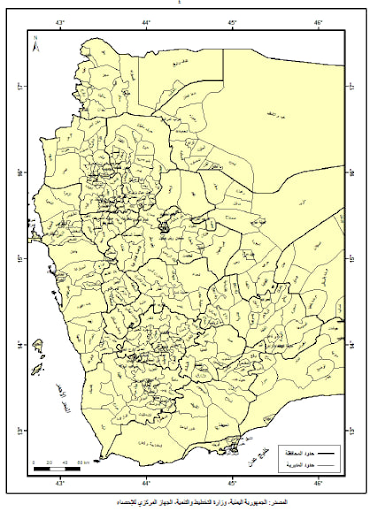التباين المكاني لمرض الملاريا في اليمن
باستخدام نظم المعلومات الجغرافية
رسالة مقدمة لنيل درجة الماجستير في الآداب (جغرافيا)
من قسم الجغرافية بكلية الآداب - جامعة عين شمس
إعداد الطالب
خالد عوض محمد عوض المنصب
إشراف
أ.د. فتحي عبد الحميد بلال
أستاذ الجغرافية البشرية ورئيس قسم الجغرافية
كلية الآداب - جامعة عين شمس
أ.د. ماجد عبد الكريم السطوحي
أستاذ طب المجتمع والبيئة وطب الصناعات
كلية الطب - جامعة عين شمس
د. إسلام حمزة أبو المجد
خبير الاستشعار عن بعد ونظم المعلومات الجغرافية
الهيئة القومية للاستشعار عن بعد وعلوم الفضاء
القاهرة
2011م
Thesis Submitted to obtain A Master's Degree in Arts (Geography)
by the student
Kheted Awadh Mohammed Awadh Almansab
Supervisers
Prof. Fathi Abdelhameed Belal
Professor of Human Geography
Head of the Department of Geography
Faculty of Arts - Ain Shaina University
Dr.Islam Abou ALmagd
Expert remote sencing
Notional Authority for Remote Sensing
and Soace Sciences
Prof. Maged Elsetouhy
Professor of Community
Medicine, Faculty of Medicine
Ain Ska University
Cairo
2011
Abstract
Studies are few in Medical Geography approach in the Arab countries in general and Yemen in particular, so technocratic methods in this area were used to give a clear idea of the geographical distribution of malaria in Yemen.
The main carrier of malaria in Yemen is the mosquito Anopheles. The high incidence of malaria are in the governorates located on the coastal plains and plateaus and reduced malaria in governorates located in the highlands. It is also found that malaria during winter and spring, spread over the governorates of the coastal plains and plateaus, and decreases in the governorates located on the highlands. During summer, there is an increase in malaria incidence in the mountainous governorates with a reduction in the coastal governorates.
In general, we find that there is a rise of malaria in Yemen during winter and spring. The district level shows that there is a rise of malaria in the districts located at the foot of the western and southern elevations, and the larger spread is in the districts of Hodeidah Governorate, and also in Mansura, which is located in the Governorate of Aden; in addition to Almodhaffar in the Governorate of Taiz, and the district of Hajjah in Hajjah Governorate. Malaria is endemic in nine governorates located on the coastal plains of Yemen, and the coefficient of endemism is high in the governorates of Aden and Hodeidah. Endemic malaria throughout the year is prevalent in the districts of (Hajja, Eldoha, Hays, Al Mallah and the districts of Sayhut.
The environmental factors in both its natural and human role in the geographical distribution of malaria is due to the geographical location of Yemen near the equator, and its position within the tropics, which spreads infectious diseases, including malaria. Also elevation plays a role in the high and low incidence of malaria among regions, where the spread of malaria is in the coastal plains region and less in the highland. The climatic factors that has a significant effect on the spread of malaria is the relative humidity, which leads to the increase in the incidence in the coastal plains, with low relative humidity in the province highlands. Temperature and rain have a direct impact as far as the influence of humidity is concerned and the cause of the spread of malaria in the highlands.
The schedule indicates the geographical distribution of the population which is concentrated in the west of Yemen, while it is reduced in eastern Yemen, as a result of the population density in the region of the western highlands of coastal and coastal plain regions it leads to the increase and spread of malaria and contributes to various activities of the population in the spread of malaria, by digging wells and building dams and the practice of agriculture, as is the movement of population from one region to another prominent in the role of increasing the number of cases of malaria.
تحميل الرسالة
drive.usercontent.google-download
تصفح وتحميل الرسالة


















